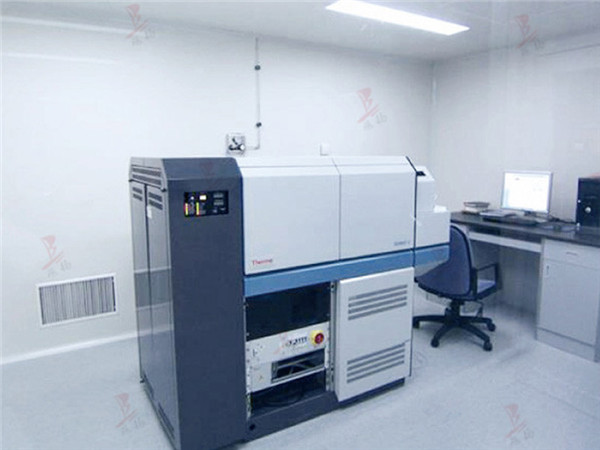动物实验室规划
动物实验室规划

Classification and standards of experimental animal / 实验动物分级及其标准
There are four levels for experimental animal in accordance with microbiological control standards:
根据实验动物微生物控制标准,可将实验动物分为四级:
Level I: Common animals (CV) are general animals that are not subject to special control. They are required not to have the pathogen and for main infectious diseases for human and animal diseases and pathogen for fulminating infectious disease. In order to prevent infectious diseases, it is necessary to take certain measures to ensure reproducibility of the results of the experiment during animal breeding (The experiments carried out by different operators and in different time in accordance with experimental procedures on same type of animals should have similar results).
一等级:普通动物(CV),是指微生物不受特殊控制的一般动物。要求排除人兽共患病的病原体和少数的实验动物烈性传染病的病原体。为防止传染病,在实验动物饲养和繁殖时,要采取一定的措施,应保证其用于测试的结果具有反应的重现性(即无论不同的操作人员,在不同的时间,用同一品系的动物按规定的实验规程所做的实验,都能获得几乎相同的结果)。
Level II: Clean animals (CL) are required not to have the pathogen for main infectious diseases for human and animal diseases.
二级:清洁动物(CL),要求排除人兽共患病及动物主要传染病的病原体。
Level III: Animals without special pathogen (SPF) are required to reach level II and exclude some designated pathogen. High efficiency air filter sterilization, UV sterilization, three glycol vapor spray and aqueous solution of lithium chloride spray can be used for sterilization.
三等级:无特殊病原体动物(SPF),要求到二级外,还要排除一些规定的病原体。其除菌与灭菌的方法,可使用空气过滤器除菌法:紫外线灭菌法、三甘醇蒸气喷雾法及氯化锂水溶液喷雾法。
Level IV: sterile animal (GF) or gnotobiotic animal (GN). Sterile animals are required not to have any microorganisms that can be detected by existing method. Gnotobiotic animals are required not have implanted with one or several kinds of known microorganisms in the sterile animal.
四级:无菌动物(GF)或悉生动物(GN)。无菌动物要求不带有任何用现有方法可检出的微生物。悉生动物要求在无菌动物体上植入一种或数种已知的微生物。
Sterile animals and animals with known bacteria or without special pathogen need to be kept in sterile environment, this kind of environment is at present known as barrier environment in the world, that is, using a barrier to separate animals from surrounding pollution.
无菌、已知菌以及无特殊病原体动物都需要在无菌或尽可能无菌的环境里饲养,这种环境,目前通用称为屏障环境,即用一道屏障把动物与周围污染的环境隔开。
A .Isolation system / 隔离系统
It is a system for breeding animals in a container with gloves and it is used to keep sterile animals and terrestrial animals. The cleanliness inside must be level 100 according to the requirements of microorganism, but rooms and operators shall not be considered as for sterile room.
是在带有操作手套的容器中饲养动物的系统,用于饲养无菌动物和栖生动物。内部保持按微生物要求的100级的洁净度,但其设置的房间及操作人员不必按无菌室考虑。
B.Shield system / 屏障系统
The sterile room with level 10,000-100,000 can be used as feeding room, which is mainly used for long-term breeding of animals without special pathogen. Strict management should be carried out when entering the room such as shower, change clothes, etc.
把10000~100000级左右的无菌洁净室作为饲养室,主要用于无特殊病原体动物的长期饲养和繁殖。入室施行严格管理,如淋浴、换贴身衣服等。
C.Semi-shield system / 半屏障系统
Broaden management of people and objects coming in and out of the room. The composition of the plane is roughly the same as the shield system.
放宽对屏障系统中人及物出入房间时的管理,平面组成大致与屏障系统相同。
D.Laminar frame system / 层流架系统
Cages should be placed in a clean horizontal laminar air. It is commonly used in small scale breeding, but there is a risk of contamination in an ordinary room for feeding, operation and handling. Semi-shield can be supplemented.
笼具放在洁净的水平层流空气中。常用于小规模饲养,但在一般房间进行饲养、操作和处理时有被污染的危险性。可用于半屏障的补充。
E.Open System / 开放系统
It is the system for people, objects and air coming in and out of the room without eliminating pollution, but usually a certain degree of cleaning management should be carried out.
是对人、物、空气等进出房间均不施行消污染的系统,但通常要进行某种程度的清洁管理。
Basic requirements for animal room design / 动物房设计的基本要求
(1) Site: quiet and hygienic. (2) Layout: preparation area, feeding area and experimental area. People flow, goods flow and animal flow are separated (one-way); purification, sterilization, pest control are required. (3) Building: have a clean corridor, feeding room, pollution corridor and other rooms. (4) Air conditioning system: temperature, humidity and air velocity are controllable with certain amount of ventilation volume and air pressure. (5) Lighting: use fluorescent lamps for animal room without windows and use glass windows for animal room with windows to filter UV. 12h lighting and 12h dark are required. (6) Water supply: drinking water and purified water.
(1) 选址:僻静、卫生。 (2) 布置:分为准备区、饲养区、实验区。要求人流、物流、动物流分开(单向流程); 要求净化、灭菌、防虫。 (3) 建筑:要求有洁净走廊,饲养室,污染走廊以及其他各室。 (4) 空调系统:有可控制的温度和湿度、气流速度和分布,有一定的换气量和气压。 (5) 照明:无窗动物房使用荧光灯,有窗动物房可安装玻璃窗,以滤去紫外线。要求12h亮,12h暗。 (6) 供水:有饮用水和精制水。
Configuration of animal room / 动物房的设置
Animal room, activity area and corresponding auxiliary room should be built according to different species and different levels of experimental animals. The site should be quiet and clean without adverse external influence.
根据不同种类和不同级别实验动物的需要,建立相应设施的动物房、活动场所和相应的辅助用房。场址应选在能保持安静、清洁、无不良外界影响的地方。
Animal room must be full of light with good ventilation, have clean ground and no water accumulation; ceiling and walls must be easy to clean and disinfect; exterior walls, roof, ceiling, doors and windows and pipelines must be free from animals, mosquitoes and other pests. Indoor temperature should be controlled at in 18-29℃, relative humidity 40%-70%, noise 60dB.
动物房须光线充足、通风良好、地面整洁,不积水;顶棚、墙壁要易于清洁、消毒;外墙、屋顶、顶棚、门窗及通外面的管道等须杜绝外界动物、蚊蝇及其它虫害钻入。室内温度控制在18~29℃,相对湿度40%~70%,噪音60dB以内。
The animal density in cages cannot be too large. Air supply device, exhaust device, cooling and heating equipment should be equipped. Dedicated sewage and drainage facilities must be built to prevent spread of pathogens. All cages should be cleaned and disinfected regularly. Pad material must be disinfected by high temperature/pressure or drugs and replaced in time. Indoor ammonia concentrations must be below 15 mg/m3.
笼内动物密度不能太大,要有送风、排风、降温及保暖设备。须有专用的排污、排水设施,防止病原扩散。各种笼具要定期清洗消毒,垫料须经高温高压或药物消毒并及时更换,使室内氨浓度在15 mg/m3以下。







